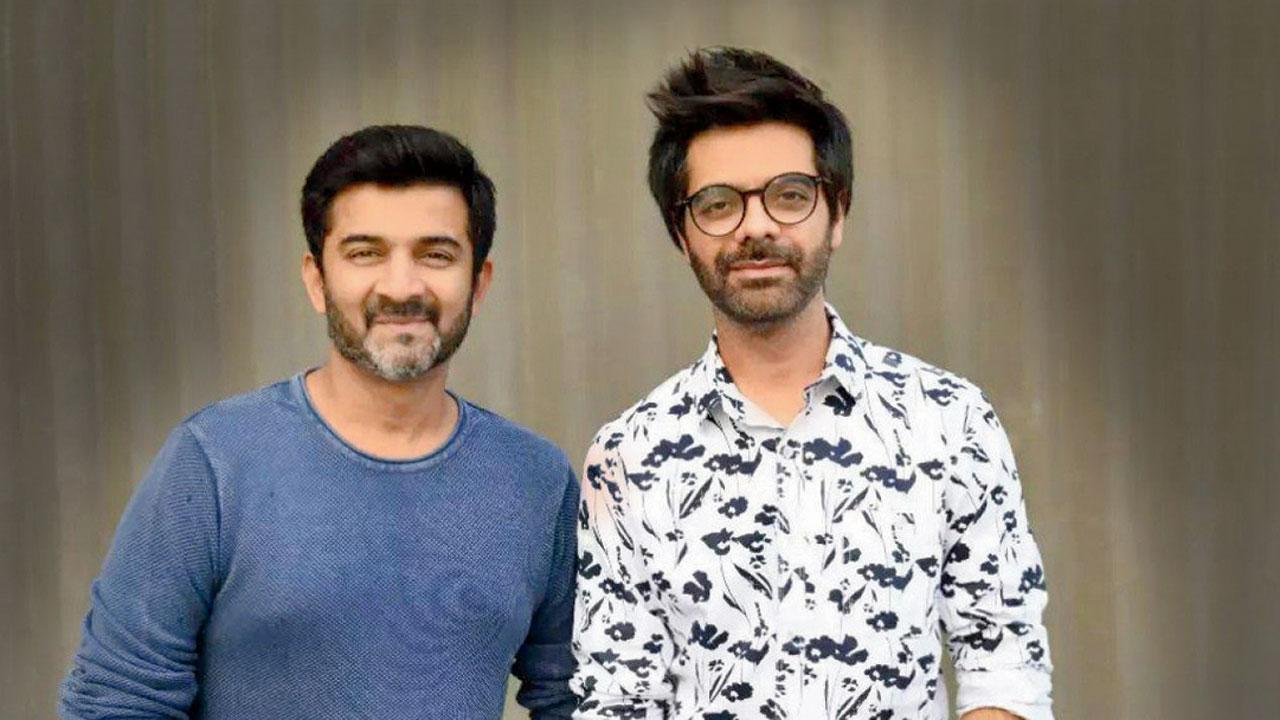Never before were we asked to release a project’s background score, say Sachin-Jigar
7:37 AM
Posted by Fenil Seta

Roping in a bunch of young musicians for Jee Karda, composer duo Sachin-Jigar says new artistes helped them break norms while composing music for Tamannaah Bhatia-starrer
Sonia Lulla (MID-DAY; July 3, 2023)
Given that the narratives of the seven protagonists that front the recently-released Amazon Prime offering, Jee Karda, are distinctly diverse, composer duo Sachin-Jigar’s decision to join hands with musicians with contrasting sensibilities could be considered a rather clever move. In this interview, they discuss what prompted their decision to rope in the young crop of musicians, and how the OTT boom has given an impetus to discussion around the score.
Edited excerpts from the interview.
Jee Karda is in stark contrast to some of your recent works. What about this one drew you to it?
Sachin: The distinguishable aspect about this one is that its songs and dances [can be looked at as] commercial independent numbers. It’s a light-hearted and feel-good show that will have an emotional connect with everyone, at one or another level. For the music, we collaborated with many young independent artistes, like Rashmeet Kaur, I P Singh, who became famous for Jeda Nasha, and also Varun Jain, who sang Tere Vaaste for us in Zara Hatke Zara Bachke. We didn’t approach any lyricist during the process. We joined hands with people who could write their own lyrics, and decided to be involved with them. There is a gamut of songs in this offering. There’s a shaadi song, a break-up number, and a sangeet offering. There is also rap, which was rendered by Mellow. They were all essential to capture the emotions between the friends.
It would be expected that composers working on the entire soundtrack would present numbers with familiar undertones instead of those that have no resemblance to one another. How did you bring these varied composers on the same page?
Jigar: Usually, songs have a defined format. But, these numbers do not. They begin with a verse, move on to a rap section, and then the chorus follows before the end. To explain this to someone who is seasoned, and to attempt to break this format [would not have been easy]. We needed a fresh perspective, which was offered by these artistes. These musicians are open to experimenting and do not follow tradition. Also, there is a process to every song. An ask can be specific — like, creating the first song, which is expected to draw the audience. Each song has a requirement that is to be fulfilled. [But], the audience is not always looking for commercial [numbers]. We don’t want to put our weight on [an artiste]. When permissible, the artiste should be allowed to be artistic; we want them to express themselves.
But, it doesn’t end there. When it comes to making a song, you can gauge when the belly is not full. A song will tell you that it may be ready, but it is still struggling. That’s where we step in and decide the way ahead. We are directors’ boys. That’s also why we love working with Dinu [Dinesh Vijan, producer]. He is open to experimenting. With web shows, composers are given some freedom because we can do things that we cannot while working on a film score. [Unlike in films], here, we can cater to a specific kind of audience.
Has the discussion on the making of a background score changed after the pandemic?
Sachin: Yes. Because of the OTT [boom], music composition has increased. Never before were we asked to release a project’s background score. But, we were asked to do so for Saas Bahu Aur Flamingo. That speaks volumes about this shift.
This entry was posted on October 4, 2009 at 12:14 pm, and is filed under
Bollywood News,
Dinesh Vijan,
Jee Karda,
Saas Bahu Aur Flamingo,
Sachin-Jigar
. Follow any responses to this post through RSS. You can leave a response, or trackback from your own site.
Subscribe to:
Post Comments (Atom)
Post a Comment